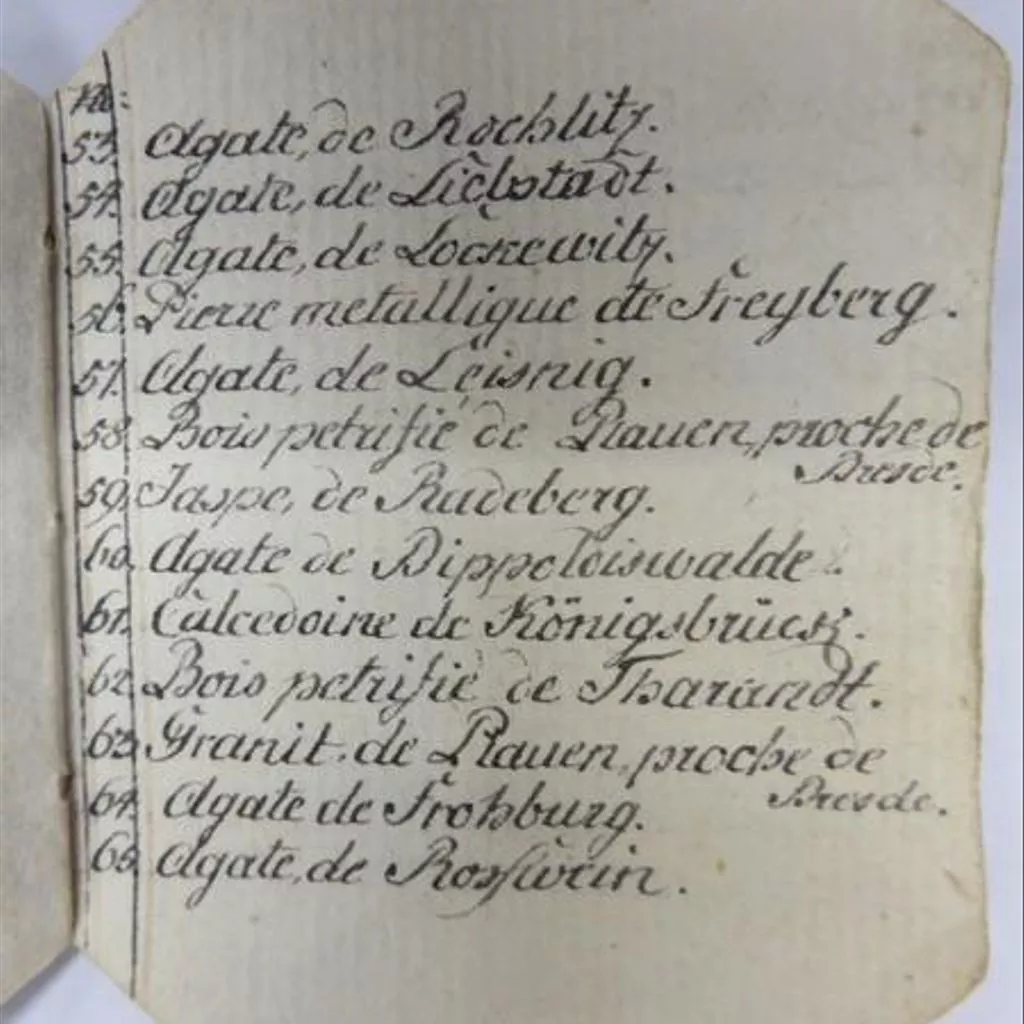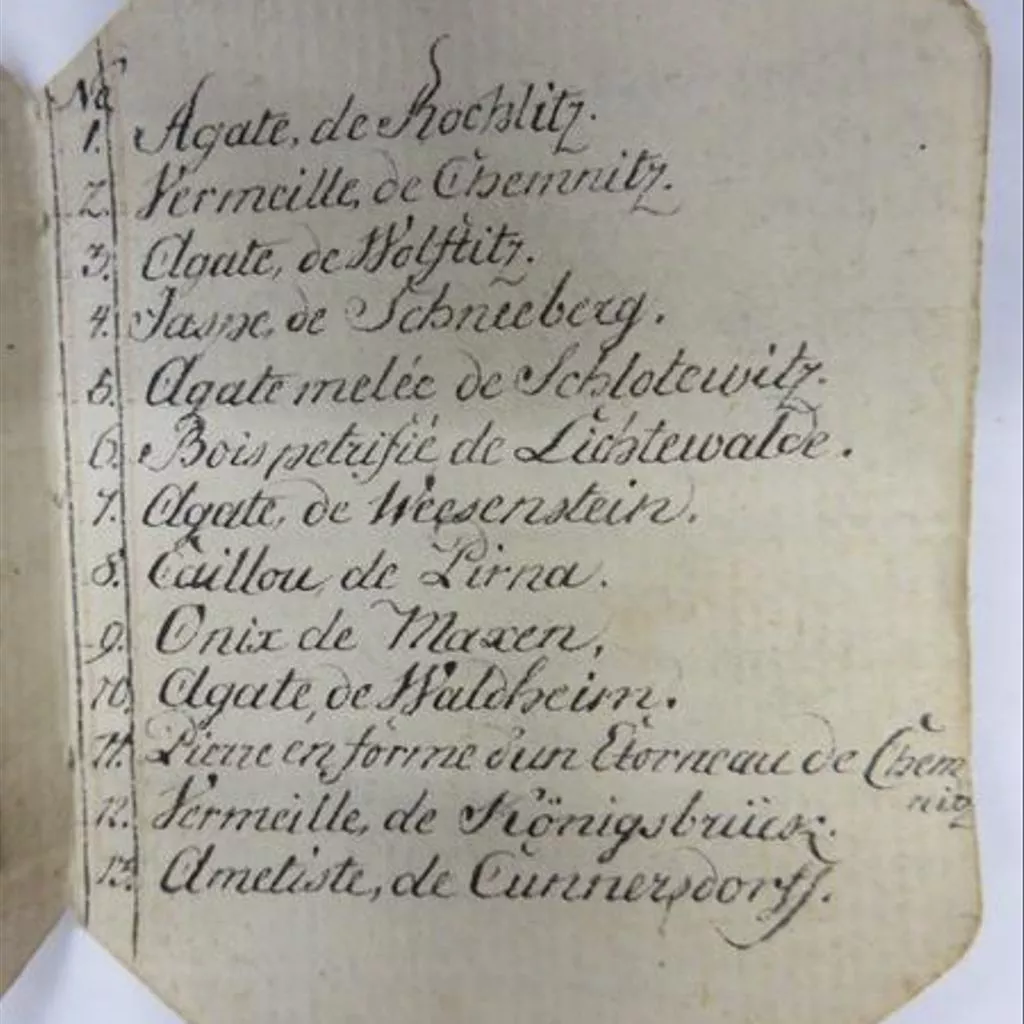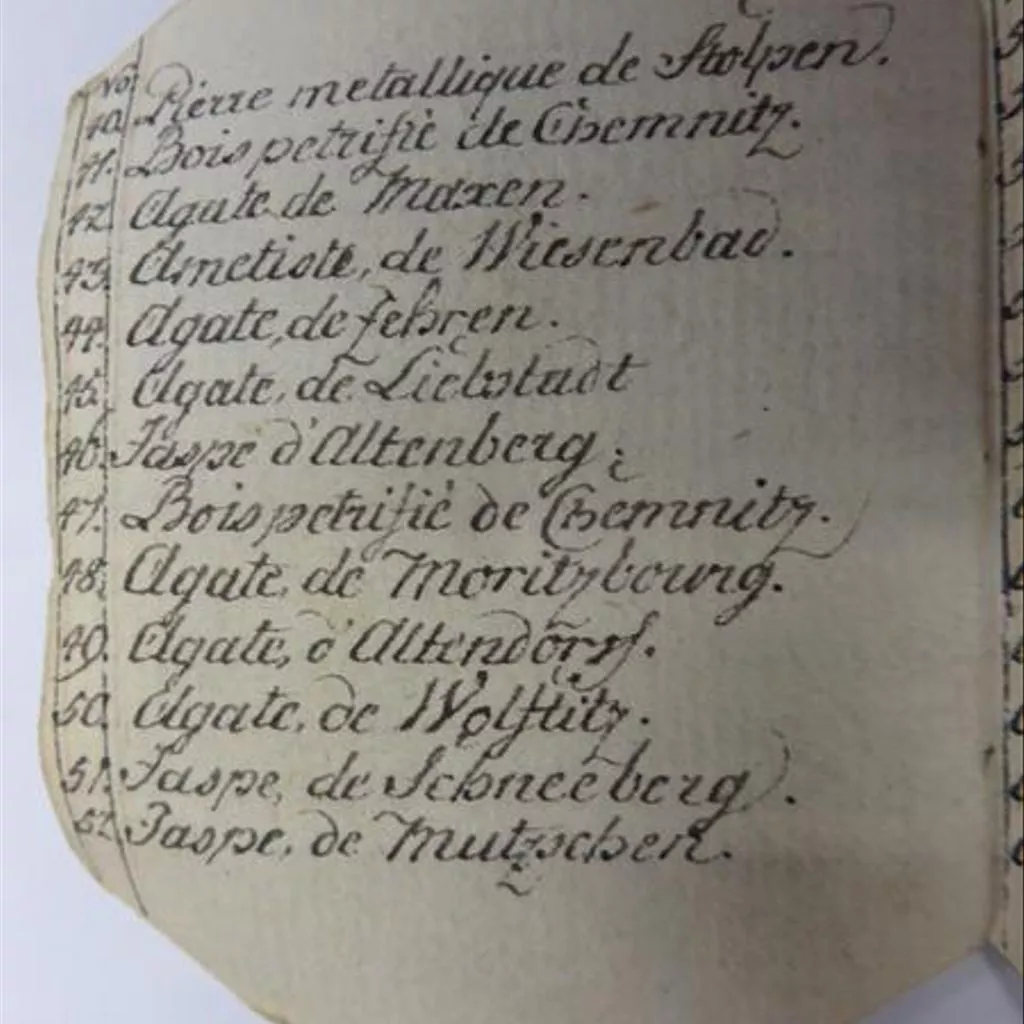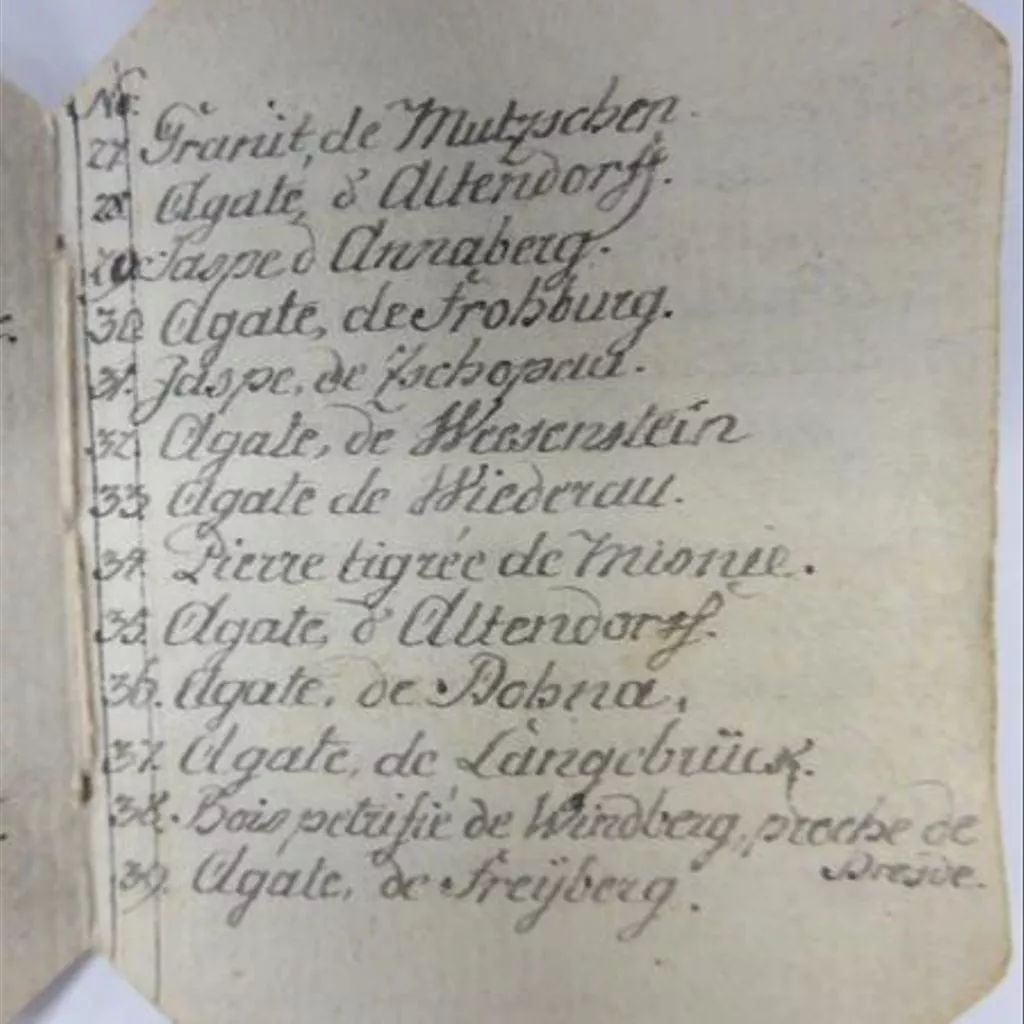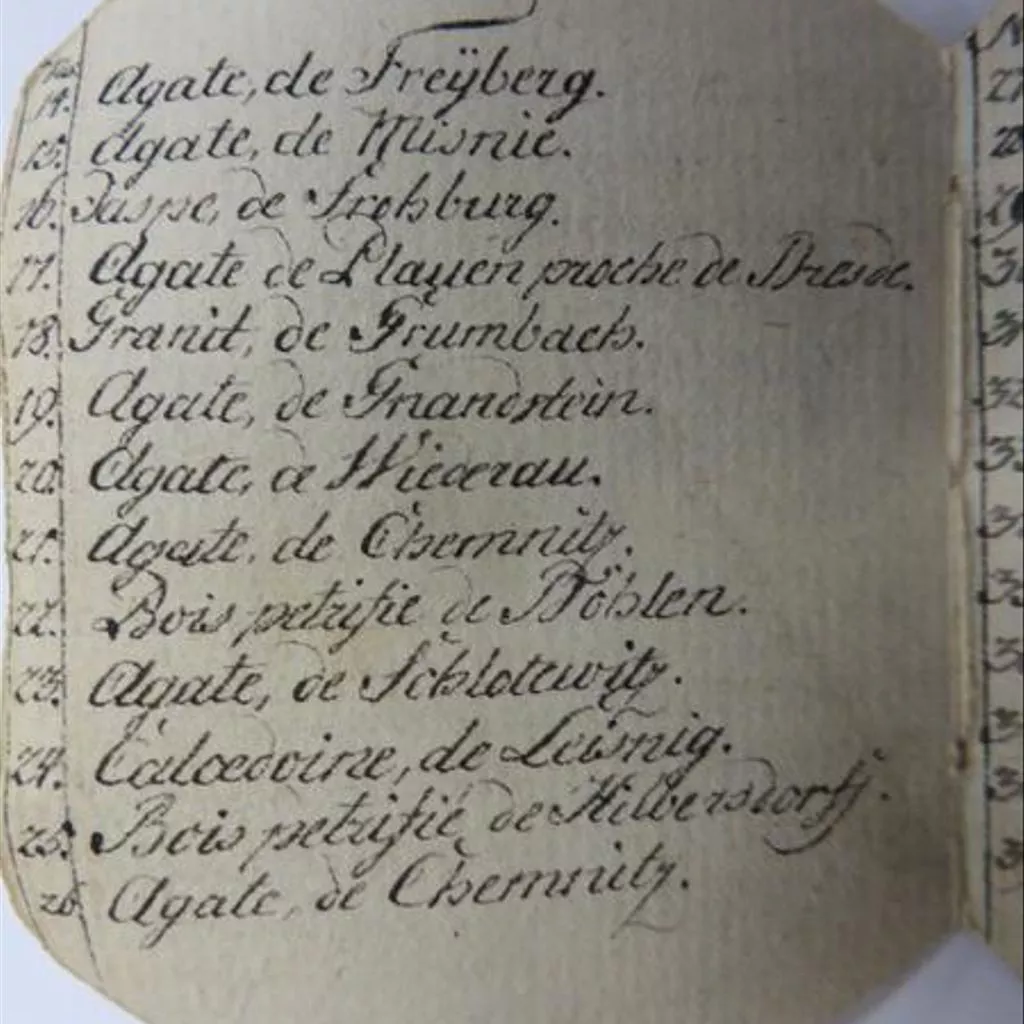Description
Circular gold box, set with 77 numbered specimens of stone, identified in a book inside the box, and flowers carved in hardstone, within a frame of simulated pearls of reverse-painted rock crystal pearls.
Joanna Whalley, FGA, head of Metals Conservation at the V&A, has contributed the following note:
'Inlaid with varieties of jasper, agate, silicified and fossilised wood as well as amethyst. The transparent and translucent specimens are backed with paint in the colours cream, green, black and purple. The pearl simulants are made from rock crystal carved with a hollow on the underside which has been coated with a silver precipitate. The flowers in relief are made from reverse-painted and carved rock crystal, carnelian, bloodstone, moss agate, white banded agate and turquoise.'
Booklet with cover of card covered in pink silk. Four sheets of paper, folded to make eight pages sewn at the folding line in the centre. The title page is inscribed in black ink in French as below. The reverse of the title page is blank. On the six pages which follow is a numbered list, 1 to 77, identifying the specimen stones mounted in the box.
Gold box, set with 77 numbered specimen stones identified in a book inside the box, Johann Christian Neuber, Dresden, about 1785-90. Book identifying stones. Case.
This is a Steinkabinett box by Johann Christian Neuber (1736-1808), court goldsmith at Dresden. It is composed of 77 numbered specimens of minerals from Saxony, a geological museum for the pocket or the table. Inside in a booklet is a list of the stones with their places of origin. As an advertisement for similar boxes by Neuber stated in 1786: ‘The stones are all numbered, none appears twice, and a small accompanying list details their names. In this way luxury, taste and science are united’. The ‘pearls’ are characteristic of Neuber. They will never chip because they are made of rock crystal and completely flat, the illusion of roundness created because they are carved underneath in the shape of a dome painted in silver.








